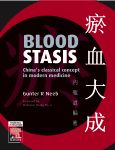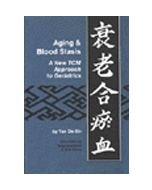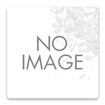We use cookies to make your experience better. To comply with the new e-Privacy directive, we need to ask for your consent to set the cookies. Learn more.
Blood Stasis
With clear and comprehensive detail. this books covers the whole area of blood stasis in traditional Chinese medicine, drawing on a huge range of original Chinese material. Many Western diseases including diabetes, gynaecological disorders, stroke, tumours and myocardial infarction, and the interaction of these with other pathological factors, are discussed, and the classical sources quoted. Differentiations and treatments, both Classical and modern, including both herbs and acupuncture, are provided in all categories, with case histories where appropriate and interesting.
‘Panta rhei’ (Everything flows), quoted from Heraclitus, heads the dedication page of this fine book. We are familiar with this simple and profound teaching of traditional medicine - that free flow, of both qi and blood, is a core principle of nature and the foundation of human health. I particularly understood the importance of the free flow of blood many years ago when I read Aging & Blood Stasis by Yan De-xin. The author explained that aging was characterised not only by deficiency - primarily the decline of essence – but also by blood stasis, hence the stiffening of the body (and mind) with age and the appearance of age spots (liver spots) and purple discolouration of the tongue body or sublingual veins. The importance of appropriate movement and exercise was of course well understood in the Chinese tradition as a way of preventing this stagnation of aging, and that understanding is mirrored in modern gerontology by the realisation that many diseases previously ascribed to aging itself are now ascribed to inactivity instead. In terms of lifestyle, a healthy flow of blood through the body can be achieved by vigorous exercise which pumps the blood through the macro and micro circulation, or by the more subtle practice of softness and relaxation which focuses on dissolving impediments to its natural flow. The ideal is probably a combination of the two.
It may be that blood stasis is an idea whose time has come since there seems to be an ever growing realisation of its importance, both within traditional Chinese and modern medicine, as the cause or consequence of many diseases. In the former, treating stagnant blood has been shown to deliver encouraging results in many diseases not previously thought to derive primarily from blood stasis, while in the latter there is growing emphasis on the importance of high blood viscosity and plasticity and a healthy microcirculation.
Gunter Neeb is ideally suited to present this valuable manual on the treatment of blood stasis. He studied the Chinese language for three years in Taiwan, and Chinese medicine to Master’s level in Tianjin, China, writing his thesis on blood stasis. His ability to translate both classical and modern texts informs this book at every level, indeed a portion of it is devoted to a translation of Wang Qing-Ren’s Correction of Mistakes in the Medical World. Yet this book is much more than an account of blood stasis in classical literature. It covers diagnosis and differentiation of blood stasis, with particular emphasis on the tongue, different treatment principles, blood stasis medicinals and formulas (and a limited number of acupuncture points) and case histories. The herbs and formulas are discussed in detail - both their traditional and modern clinical use and the findings of pharmacological research.
A considerable body of work has gone into this book and although it will be primarily of theoretical interest to acupuncturists, it is valuable clinical text for herbalists.
Contents
About the AuthorForeword
Preface
Dedication and Acknowledgements
Notes on Translation Style
Notes on Terminology
Abbreviations Used in the Text
Section 1 Theory and Background Knowledge
1. Introduction: Thought Models in Chinese Medicine
2. History and Development of Blood Stasis and Its Pathological Mechanisms
3. Comprehension and Diagnostics of Blood Stasis in Conventional Medicine
4. Aetiology of Blood Stasis in Chinese Medicine
5. Traditional Diagnosis and Syndrome Differentiation of Blood Stasis
Section 2 Practical Application
6. Examples of Treatment Principles for Blood Stasis
7. Blood Stasis Related Medicinals, Their Application and Combination
a. Blood stasis related medicinals
b. Tables and Boxes on Blood Invigorating Chinese Medicinals
c. Pei Yao: The Most Common Combinations of Blood Invigorating Medicinals
8. Blood Stasis in the Practice of TCM - Formulas and Acupuncture
9. Practical Cases: 20 Further Case Studies From the Ancient and Modern Practice of Famous TCM Physicians
Section 3 Classical texts
10. Wang Qing-Ren's 'Yi Lin Gai Cuo' (Corrections of Mistakes in the Medical World)
a. Wang's Anatomical Studies
b. Wang's Famous Formulas and Their Indications
c. Wang's Clinical Studies and Methodology
11. Excerpts Relating to Blood Stasis from Six Other Classical Texts (In Chronological Order)
Appendices
Appendix 1 Glossary of Essential TCM Terms
Appendix 2 Glossary of Essential Terms in Hemorheology
Appendix 3 List of Chinese Medicinals with Their Western Pharmacological Actions
Appendix 4 Index of Materials and Formulas
Appendix 5 List of Formulas in This Book, Chinese-English with Quantities
Appendix 6 Epilogue - Inspector White Coat
Appendix 7 Bibliography
Appendix 8 Eminent Chinese Physicians and Their Works
Appendix 9 Short Bibliography of Author's Publications (In Chronological Order)
| Summary | With clear and comprehensive detail. this books covers the whole area of blood stasis in traditional Chinese medicine, drawing on a huge range of original Chinese material. Many Western diseases including diabetes, gynaecological disorders, stroke, tumours and myocardial infarction, and the interaction of these with other pathological factors, are discussed, and the classical sources quoted. Differentiations and treatments, both Classical and modern, including both herbs and acupuncture, are provided in all categories, with case histories where appropriate and interesting. |
|---|---|
| Author | Gunter R. Neeb |
| Publication Date | 28 Apr 1976 |
| Publisher | Churchill Livingstone |
| Number of Pages | 384 |
| Book Format | Hardback |
* Orders shipped outside of Europe are eligible for VAT relief and will not be charged VAT.





